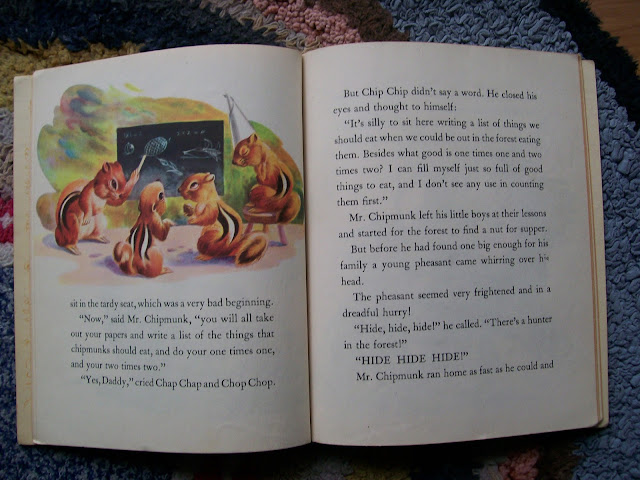By Eve Merriam
Illustration by Rick Schreiter
Copyright 1966
Just last week, I was given the reminder that since we are
no longer using typewriters, it is not necessary to double space after a
sentence. Actually, it was more along
the lines of “Really, don’t double space after a sentence!” Having learned keyboarding skills on a
typewriter and spending all of college using one, it is a really, really hard
habit to break. (Don’t tell, but I’m
doing it right now!)
Anyway, the reminder to stop double spacing made me
reminisce about the olden days – the days of using all my finger strength to
hit the A and P with enough force to make a mark, and the days of hearing the
delightful ding at the end of every line.
It also called to mind this little picture book, Miss Tibbett’s
Typewriter.
Miss Tibbett lived in a large city with a sweet potato
plant, a cat, and a typewriter. She
liked the clickity-clack sound of the keys and the ping of the little bell. Using all the keys, QWERTYUIOP, ASDFGHJKL,
and ZXCVBNM, she could type out ‘the quick brown fox jumps over the lazy dog’. Unfortunately, Miss Tibbett began having trouble with her
typewriter. One key always got
stuck. She just kept right on typing,
though. After all, just one key among so
many wouldn’t matter.
One day, Miss Tibbett was asked to type out a sign for an
auto repair shop. She happily did so,
typing out ‘Come to Golden’s auto repair shop.
We ix lats and
enders. After a few more mistake
laden signs, Miss Tibbett realized she better get that old typewriter
fixed. That F key did get fixed, so Miss
Tibbett was ready to get to work again. Her
next sign was for a restaurant. ‘Fish
chowder, oston style. Fried flounder with oiled egg sauce. oston aked eans.
Oh no. More trouble!
It took several trips to the repair man, but eventually all
26 letters were fixed and once again, the quick brown fox jumped over the lazy
dog.
I think Miss Tibbett learned a valuable lesson from this
experience. What’s one letter among so
many? Very important, actually! It turns
out that each letter is just as important as any other. Could that idea hold true with people,
too? I think so! What’s one person among so many? Very important, actually! It turns out that each person is just as
important as any other!






